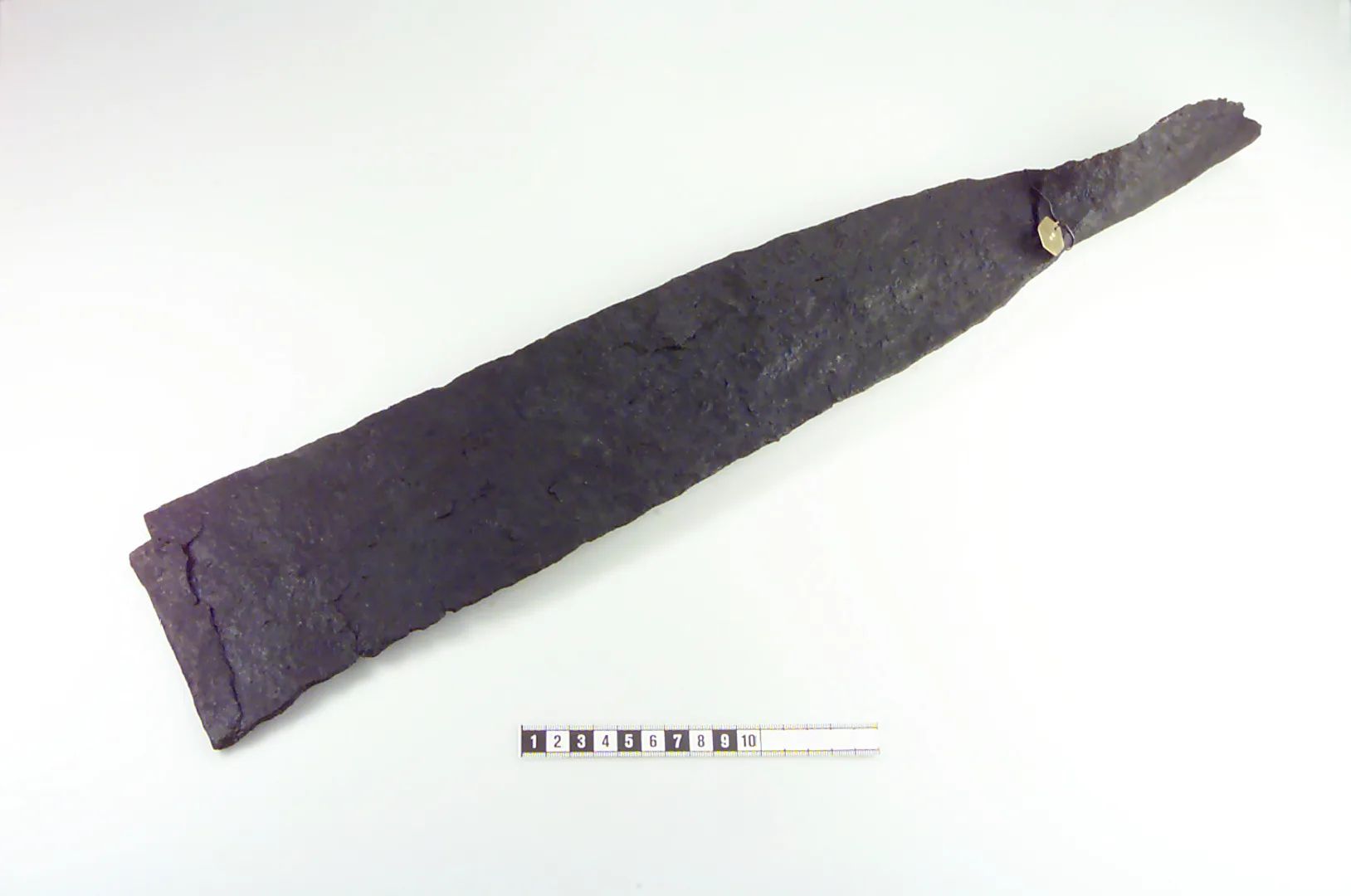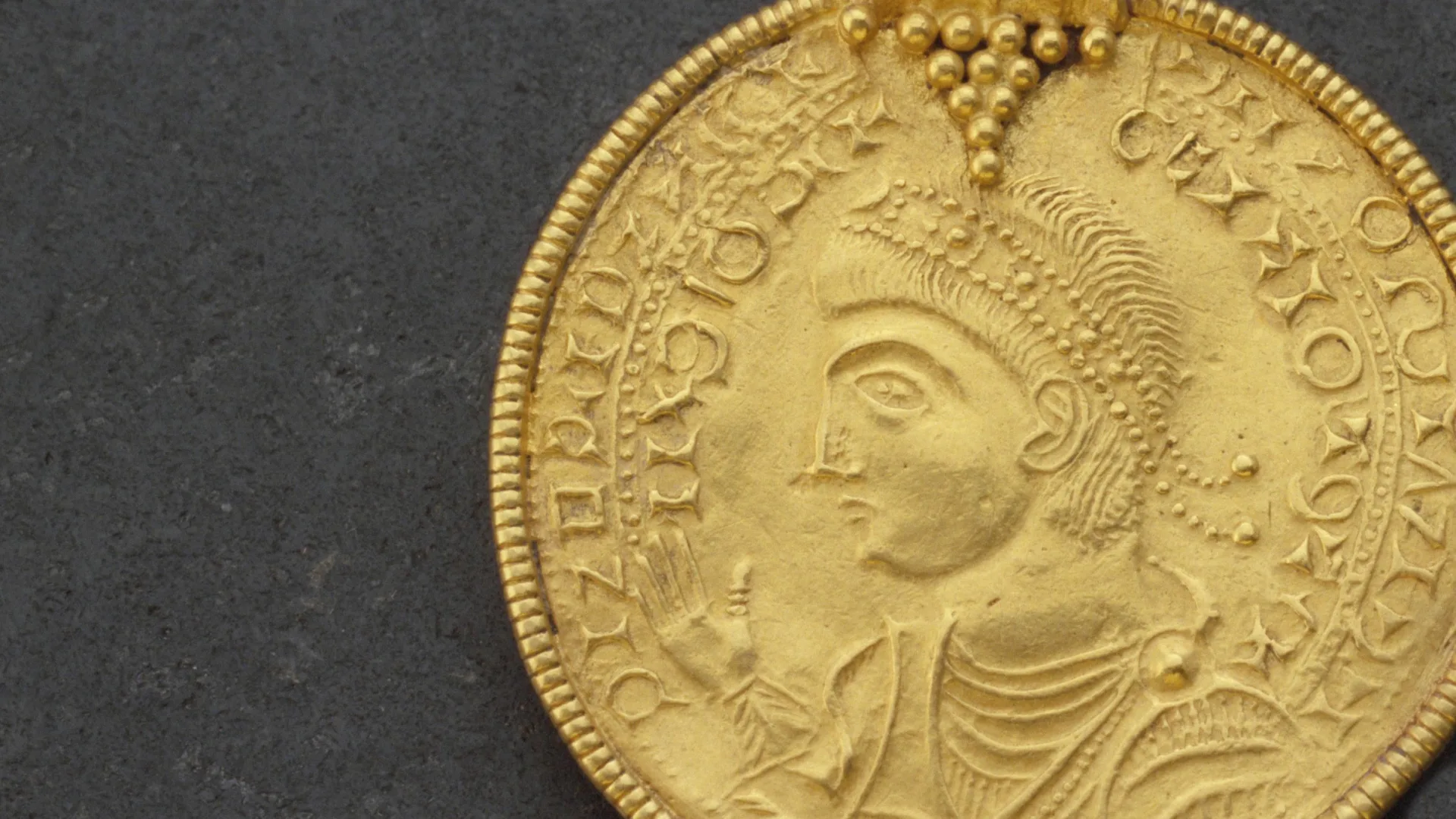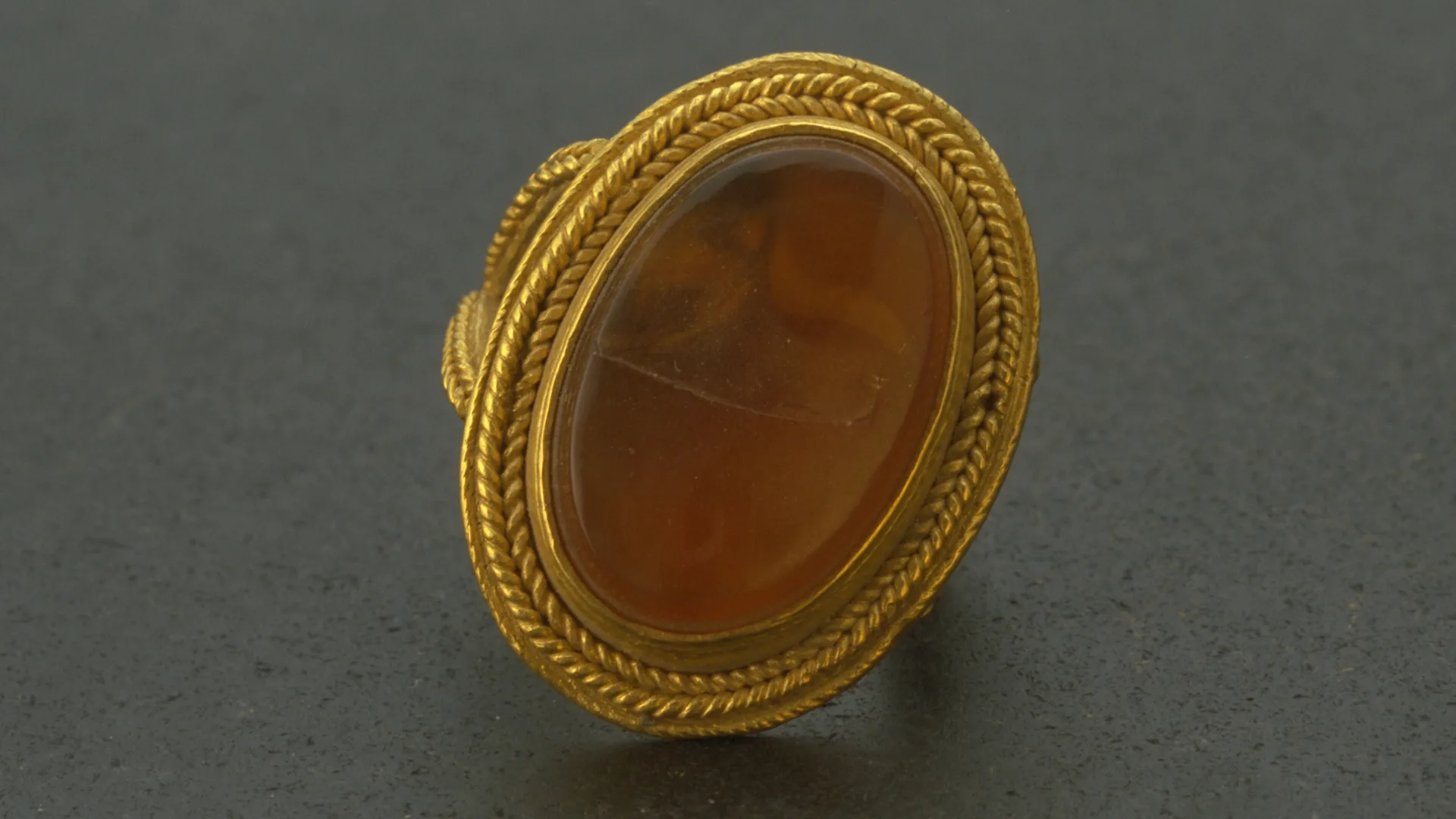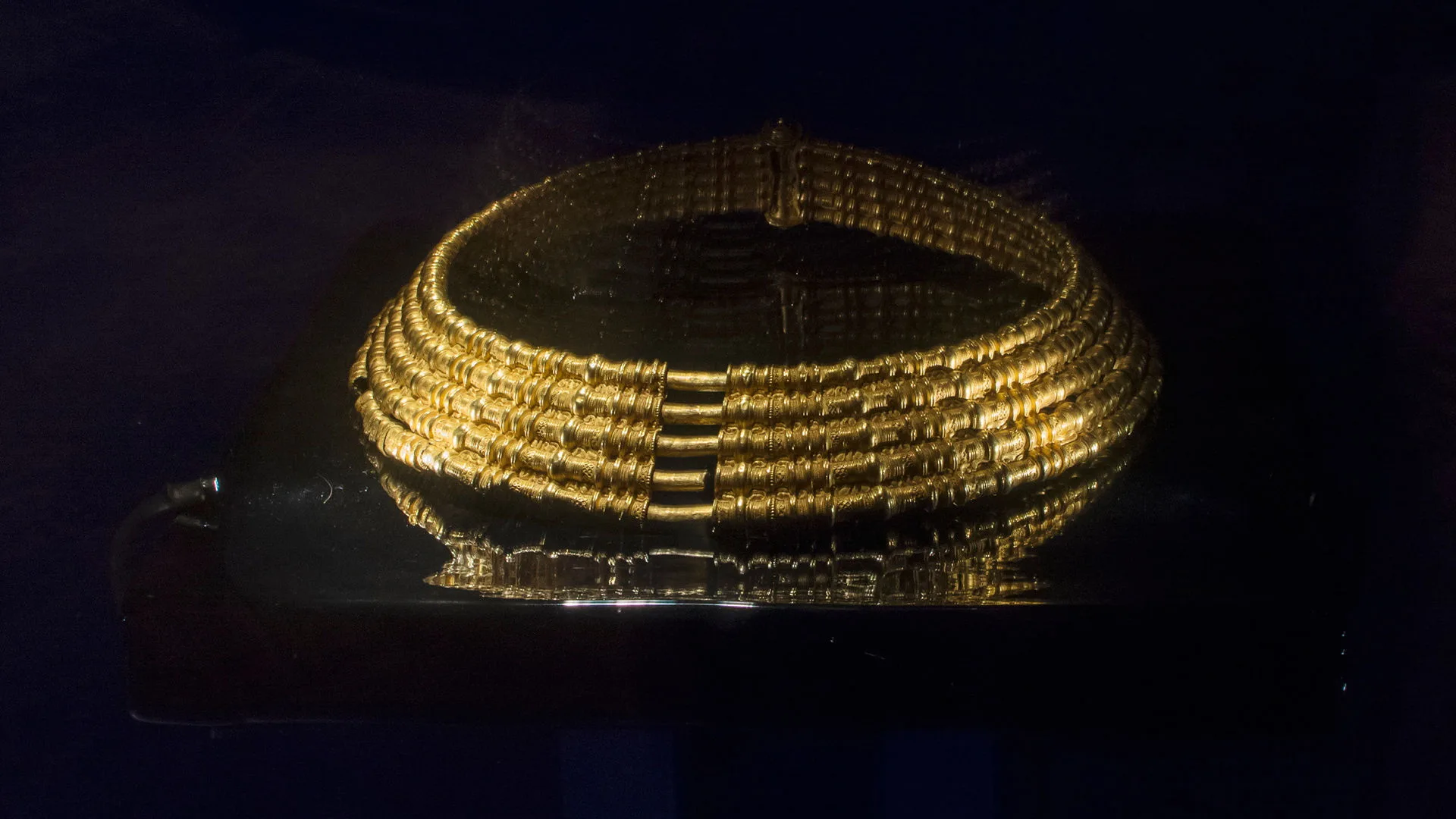A curious iron find
Bronze Age
1700 BC – 500 BC
Iron Age
500 BC – AD 1100
Viking Age
AD 800 – AD 1100
These iron pieces are a form of semi-finished product known as bar iron, intended to be further processed into tools or other items. Their shape, commonly referred to as spade-shaped, may have made it easier for buyers to judge the quality of the iron. Different forms of bar iron are known, but this particular spade-shaped type is most commonly found in Gästrikland, Hälsingland, Jämtland, and Medelpad. The Kråknäset bars are unusually large, up to 58 centimetres long and weighing around 1 kilogram each.
Metallographic analysis has shown that the iron is of high quality. A was also carried out on one of the pieces, suggesting that the iron was produced around the time of Christ. This would make it the oldest known iron find of its kind in Sweden. However, there is a caveat: the dated charcoal fragment might have come from an old tree growing in the ancient forest at the time, possibly making the result misleading.

Piece of iron
Iron blooms – 600 years younger
Just a few metres from the bar iron, two unworked iron blooms (known in Swedish as luppar) were found during the same investigation. Iron blooms are the raw mass of iron that results from smelting, produced when the slag is separated from the iron in the furnace. These blooms must then be further refined to remove remaining slag.
The two blooms from Kråknäset show no signs of processing, meaning they were likely taken directly from the furnace. This makes the find highly unusual, and the blooms themselves are remarkably large. An analysis revealed the iron to be of very high quality.
One of the blooms was also radiocarbon dated, and, somewhat surprisingly, the result placed its production around AD 600, six centuries younger than the bar iron found nearby. The two finds, located just a few metres apart, were not contemporary.






